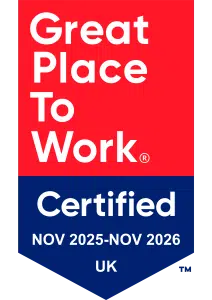The role of leadership in shaping employee experience

And while some leaders still think employee experience (EX) is about perks, free food or ping-pong tables, it takes more than freebies to build healthier work environments. In 2025, people want purpose, clarity and connection. And leadership – either good or bad – can make or break that.
Leadership is the employee experience
The experience of work is largely the experience of your manager. Research backs this. Employees who trust leaders are significantly more engaged and more likely to stay.
Leaders shape:
- how to manage performance
- how to bring values to life
- how to communicate change
- how safe people feel speaking up.
So yes, leadership is the EX. And the margin between a good and bad one can be the difference between energy and exhaustion.
Trust is essential
When leaders are consistent, human and honest – even when the answer is “we don’t know yet” – people respond with trust. That trust is the foundation for autonomy, initiative and high performance. This also works in reverse: a lack of trust creates silence, fear and disengagement – and that spreads fast.
Feedback shouldn’t be a calendar event
Feedback that only happens once a year isn’t feedback – it’s paperwork. The best leaders treat it as an ongoing dialogue, either through regular check-ins, short conversations or giving employees space for upward input.
Done well, feedback isn’t necessarily always polished, but it’s always purposeful. And it helps build confidence and capability within a team.
Psychological safety matters more than polish
People don’t need leaders to have all the answers, but they do need them to be real. Admitting mistakes, asking questions and creating space for challenge – these are all behaviours that help build workplace safety. And safety builds innovation, contribution and resilience. Your employee might be sitting on a million-pound idea – but if they’re too uncomfortable to share it, you can’t take advantage of it.
Language sets the tone
We’re taught as children that our words matter. And when it comes to the workplace, the words leaders use influence how teams think and speak. It’s easy to underestimate, but language has weight – especially from those with authority.
Leaders who use clear, respectful, inclusive language send a strong message. The right verbal communication creates cultural consistency, while also helping set expectations for behaviour across the board. Workplace leaders are – whether they like it or not – role models, and should act like one.
Growth is a leadership responsibility
Career conversations aren’t just for HR. Leaders who actively support their employees’ career development, even without a clear next step, show people that they’re seen and valued. Not only does this increase motivation and help retain talent, but it also allows employees to move through the ranks of a company and reduce costs on external hiring.
And it’s not about lofty ambitions, either. Sometimes, the simple act of asking, “What do you want to learn next?” is enough.
Change reveals leadership quality
During change – and especially during difficult change – all eyes are on leadership. People notice tone, visibility and response times. They sense gaps, and if left unaddressed, those gaps fill with friction and fear.
Leaders who are present, honest and responsive reduce that friction. They help teams stay focused, even when the outcome is uncertain. In short, they carry the emotional load while setting the tone for their workforce.
Culture is built in the margins
Small moments matter. Whether that’s daily check-ins, recognition or simply listening, these aren’t added extras. They tell people what’s expected, what’s appreciated and what’s normal. Leaders who use these moments deliberately help build a culture that your people will feel every day – not just during campaigns or comms pushes – and is far more likely to last.
Final thoughts
So now you see: leadership isn’t separate from EX – it is EX. Every interaction either builds trust or chips away at it, and every message has the potential to either clarify or confuse. When you’re leading a company, every behaviour either signals safety or stress.
So want to get it right? Start with intent, focus on clarity and prioritise consistency. Show up and lead change. Because when leadership is intentional, EX becomes a shared success – rather than just an HR pipe dream.
